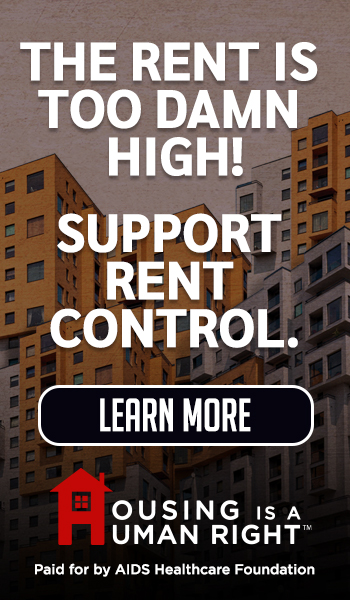Comments
iAUDIT! - In my 31 years working for the same city, I served under five City Managers. Each had their strengths and weaknesses, and each had unique leadership styles. One encouraged me to go into performance auditing in the early 1990’s. Working with those City Managers, numerous department heads, and many mid-managers, and being a manager myself, I learned a lot about leadership. Performance auditing taught me the technical aspects of leadership, and personal experience showed me the practical ramifications of different leadership styles. I learned there is no single “correct” leadership style for all organizations and all situations. Effective leaders adapt to changing conditions while maintaining a consistent vision for their organizations.
There are different paths to successful leadership, and there are just as many paths to failure. In the public sector, one of the most dangerous forms of poor leadership is what I term theoretical management. Theoretical managers tend to rise up in organizations via non-operational or support paths, such as analytics or process-oriented departments like accounting. They have little experience dealing directly with the public or managing outcome-based programs. I avoided that trap by managing my department’s customer service operation, and being based in Public Works, which often uses outcome-based performance measures. It taught me how programs created on paper can impact people in the real world.
Theoretical leaders have read all the books, studied all the charts, and followed the decision trees, and they expect certain outcomes if they follow given processes. They tend to be highly intelligent in terms of learning, but naïve when it comes to the vagaries of human nature. They are also inflexible when things don’t go according to their plan. They either freeze in place because they can’t make decisions, or they lash out at others for not following the plan. When combined with political ideology, theoretical leadership can be especially toxic.
L.A.’s homelessness programs have been in the grip of ideological theoretical leadership for years. Homelessness is treated as a one-dimensional problem, caused by the shortage of affordable housing. Other problems like substance abuse or untreated mental illness are either ignored (hence No Barrier Housing First) or written off as a consequence, rather than a cause, of homelessness. Create more affordable housing, so the theory goes, and homelessness will decrease. That belief has become the political mantra of elected leaders who view the housing crisis as a manifestation of the wider problems of social and economic inequality. Therefore, free or subsidized housing becomes a way to achieve a more equitable society, rather than one of several options to solve homelessness.
The elevation of housing as a universal solution to homelessness has driven the investment of billions of dollars into new construction and the acquisition and rehabilitation of existing structures. The problem, of course, is that homelessness has steadily increased, even has homelessness program expenditures increased five- and ten-fold. Theoretical leaders, faced with the failure of Housing First, are unable to think of alternatives other than pouring more money into existing programs. Because their ideology is bound to their decision-making, their first reaction to criticism is to attack; they demonize Housing First critics as heartless NIMBY’s who hate the homeless or who want to criminalize poverty. They will go to any lengths to defend their beliefs and are intellectually and emotionally unable to change their worldview.
Just two examples of the tremendous costs of theoretical are Measures ULA and A, both recently approved by voters, and both falling well behind their intended goals. Measure ULA was passed in November 2022; it added a four percent tax to real estate sales over $5 million and 5.5 percent on sales over $10 million. Although advertised as a “mansion tax”, it applies to all real estate transactions, including commercial, industrial, and multifamily housing. Supporters claimed it would generate $1 billion per year to fund affordable housing construction. The theory was that the increased tax would be a minor cost in the world of high-dollar real estate, and supporters successfully pictured large property owners as greedy developers who would finally have to shoulder some of the costs of affordable housing.
The problem was ULA was based on a set of theoretical and political assumptions rather than practical reality. First, it assumed real estate sales would be fairly constant regardless of other economic forces. Real estate analysts warned ULA would suppress sales and development, especially of multifamily housing, which changes hands more often than commercial transactions. Specifically, smaller multifamily property owners would be most negatively affected because they lack the deep capital pockets of larger owners. Second, although advertised as a “mansion tax”, only about half the transactions subject to the Measure are large residential homes; the rest are commercial, industrial, or multifamily. The dynamics of sales are different for each sector, and developers are more sensitive to costs for larger projects, especially multifamily buildings. As an article from LAist explains, “developers who already face higher construction costs and regulatory hurdles in LA” are less likely to pursue projects that incur Measure ULA’s extra costs.
As the LAist article describes, the erroneous assumptions made by ULA’s supporters mean actual revenue has been far lower than projections. Rather than generating $1 billion per year, the Measure has garnered only $630 million in two years, or about a third of annual estimates. In addition, an analysis from RAND and UCLA’s Lewis School shows the Measure has decreased new housing production by 18 percent—or 1,910 units—per year. In other words, rather than increasing affordable housing, the Measure’s costs have suppressed it.
This is where ideology and theoretical assumptions become real problems. ULA’s supporters refuse to believe the UCLA team’s findings, insisting large developers are intentionally stalling projects in the hopes the Measure is overturned. They also say a general economic slowdown has affected real estate. However, UCLA’s study took other market forces into account in its analysis. UCLA recommended exempting new multifamily developments from the tax, stimulating new construction to meet ULA’s stated purpose. Bizarrely, ULA’s supporters rejected that recommendation because it would decrease the Measure’s revenue, which is a surprising attitude given that revenues are already well below estimates because of increased building costs.
Like ULA, Measure A seems set to disappoint its supporters’ estimates. The Measure, approved by voters last November, doubled Measure H’s quarter-cent sales tax to a half-cent, with revenues going toward homelessness programs. Again, warnings were ignored. For one thing, any increase in sales taxes is always regressive, meaning they affect low-income families more than those with higher incomes. As a recent Westside Current article describes, the tax is hitting seniors on limited incomes especially hard. Ironically, senior citizens make up one of the fastest-growing segments of the homeless population, and Measure A is increasing their financial troubles.
Also, like ULA, Measure A’s supporters made some assumptions that economic experts warned were incorrect. They assumed sales would remain steady or increase, resulting in yet another $1 billion-dollar annual revenue estimate. (Perhaps supporters use billion dollar estimates because they sound so impressive). However, a January 30 LA County budget presentation was already projecting lower revenues, two months before the tax took effect on April 1. Revenues dedicated to “Comprehensive Homelessness Services” (existing homelessness programs) actually decreased by $10 million compared to the previous year’s revenue from Measure H. The budget report attributes the projected reductions to economic challenges and changes in consumer spending patterns. Although “consumer spending patterns” aren’t detailed, we should consider that some economic analysts warned consumers would change their habits, buying high-cost items outside County limits where sales taxes are lower, or deferring purchases as long as possible. People will buy high-cost items from the most economical source, a fact that seems to have escaped Measure A’s supporters.
We should also question Measure A’s true purpose. As we know, LAHSA, the City, and the County have done an atrocious job using existing financial resources. An audit from the LA County Controller and an independent assessment from the audit firm Alvarez & Marsal are the latest in a long history of reports documenting financial mismanagement and a lack of accountability, especially in contracts between LAHSA and its army of nonprofit providers. In late 2023, I helped the LA Alliance for Human Rights create a report that shows the County has left hundreds of millions of Measure H and State funding money unspent. Measure A was advertised as a bold break from past practices, but the County’s budget presentation shows 60 percent will go to Comprehensive Homelessness Services, meaning the revenue will fund the same ineffective programs that have been cited in the audits and studies. In keeping with advocates’ obsession with housing construction, just under 36 percent of the revenues will go to the LA County Affordable Housing Solutions Agency (LACAHSA), a heretofore unknown agency tasked with the nebulous job of increasing and preserving the county’s affordable housing stock. According to County press releases, LACAHSA will also be the administrator of Measure A money, meaning it will be monitoring itself. This structure is no different than the current status quo. Rather than funding new or innovative programs, Measure A is merely a way to increase the funding to agencies that have already shown themselves to be unaccountable with the funding they have now.
The intransigence of our theoretical leaders is in truth a sign of intellectual immaturity. As Winston Churchill said, “A fanatic is one who can't change his mind and won't change the subject”. When confronted with the failure of their programs, theoretical leaders cling with increasing fanaticism to their beliefs. That’s why criticism of homelessness programs is often met with meaningless insults like “NIMBY”, “hating the homeless” or being classist. Once the theoretical underpinnings of their beliefs are kicked out from under them, insults are all they have left. While dealing with theoretical leaders can be frustrating, in terms of real costs, billions of dollars in homelessness funds have been wasted, and we still have at least 75,000 people living on our streets, where seven die each night.
(Tim Campbell is a resident of Westchester who spent a career in the public service and managed a municipal performance audit program. He focuses on outcomes instead of process in his iAUDIT! column for CityWatchLA.)






